Welcome to our blog, where we embark on a journey to explore the power of positive discipline and how it can bring about lasting change in our lives. In a world that often focuses on punishment and control, positive discipline offers a fresh perspective that nurtures respect, understanding, and growth.
By mastering the principles and techniques of positive discipline, we can create harmonious relationships, foster healthy development, and empower ourselves and those around us.
Positive discipline is not just about managing behavior; it is a mindset and a way of life. It is an approach that recognizes the inherent dignity and worth of every individual, and it seeks to guide them toward self-discipline, responsibility, and accountability. Instead of relying on punitive measures or strict rules, positive discipline emphasizes empathy, communication, and problem-solving skills.
In this blog, we will delve into the core principles of positive discipline, explore its benefits, and discover practical strategies that can be implemented in various areas of life. Whether you are a parent, teacher, caregiver, or simply someone interested in personal growth, this transformative approach can empower you to create a positive and nurturing environment.
We invite you to join us on this empowering adventure as we delve into the world of positive discipline. Together, let’s create a positive and nurturing environment that fosters lasting change and brings out the best in everyone involved.
Table of contents
- Why Positive Discipline is Essential for Parents
- Key Principles of Positive Discipline
- Strategies for Implementing Positive Discipline at Home
- Overcoming Challenges in Positive Discipline
- Tips for Sustaining Positive Discipline Practices
- Additional Resources and Further Reading
- Conclusion
- Frequently Asked Questions
Why Positive Discipline is Essential for Parents
Parenting is a complex journey filled with challenges, and discipline is an integral part of it. However, traditional approaches to discipline, such as punishment and rewards, are often ineffective and can strain the parent-child relationship.
That’s where positive discipline comes in. Positive discipline is an approach that focuses on teaching and guiding children through their actions, promoting their development, and fostering a strong parent-child bond.
In this blog, we will explore why positive discipline is essential for parents and delve into the impact it has on children’s development, as well as the benefits it brings to building strong parent-child relationships.
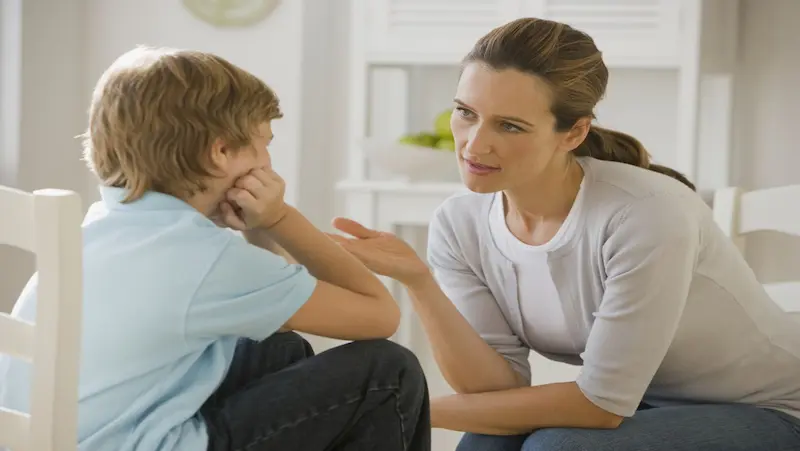
Encourages Self-Discipline:
Positive discipline is centered around helping children develop self-discipline rather than relying on external control or authority. By setting clear and consistent expectations, parents provide a structure that allows children to understand boundaries and make responsible choices.
Through positive discipline, children learn to regulate their behavior, develop problem-solving skills, and take ownership of their actions. This cultivates a sense of independence and self-control, which are valuable traits that will benefit them throughout their lives.
Nurtures Emotional Intelligence:
Emotional intelligence is the ability to recognize and manage one’s own emotions as well as empathize with others. Positive discipline emphasizes empathy and understanding, providing opportunities for parents to help children identify and express their emotions in a healthy manner.
Instead of punishing or ignoring negative emotions, parents use positive discipline approach challenges as teachable moments, encouraging their children to explore their feelings, find appropriate ways to cope, and develop resilience. This nurturing of emotional intelligence equips children with invaluable skills for building strong relationships, solving conflicts, and adapting to various social situations.
Promotes Healthy Communication:
Positive discipline fosters open and respectful communication between parents and children. Instead of resorting to yelling or criticizing, parents using positive discipline employ active listening, problem-solving discussions, and negotiation techniques.
This approach creates a safe space for children to express their thoughts, concerns, and needs, which strengthens their communication skills and encourages them to seek guidance and support from their parents. By promoting healthy communication, positive discipline allows parents and children to develop a deeper understanding of each other’s perspectives, leading to stronger bonds and trust.
Builds Self-Esteem and Confidence:
Traditional discipline methods often focus on highlighting children’s mistakes and shortcomings, which can damage their self-esteem and confidence. Positive discipline, on the other hand, emphasizes recognizing and reinforcing positive behavior.
By praising and acknowledging their efforts and achievements, parents using positive discipline help their children develop a healthy self-image and a sense of competence. This boosts their self-esteem, enhances their confidence, and motivates them to continue making positive choices. Children who grow up with a strong sense of self-worth are more likely to face challenges with resilience and have healthier relationships throughout their lives.
Strengthens Parent-Child Relationships:
Positive discipline strengthens the parent-child relationship by creating an environment of trust, respect, and mutual understanding. By focusing on teaching rather than punishing, parents using positive discipline establish themselves as supportive guides rather than authoritative figures.
This approach fosters a deep connection between parents and children, as it emphasizes collaboration, empathy, and problem-solving. Through positive discipline, parents have the opportunity to model positive behavior, reinforce values, and provide consistent guidance, laying the foundation for a lifelong bond built on love and respect.
Key Principles of Positive Discipline
A positive discipline is an approach to parenting and teaching that focuses on fostering healthy relationships and guiding children’s behavior in a respectful and effective manner. It aims to teach children important life skills while maintaining their dignity and promoting self-discipline.
Two key principles that form the foundation of positive discipline are establishing clear boundaries and expectations, and encouraging effective communication and active listening. In this blog, we will delve into these principles and understand how they contribute to creating a nurturing and supportive environment for children.
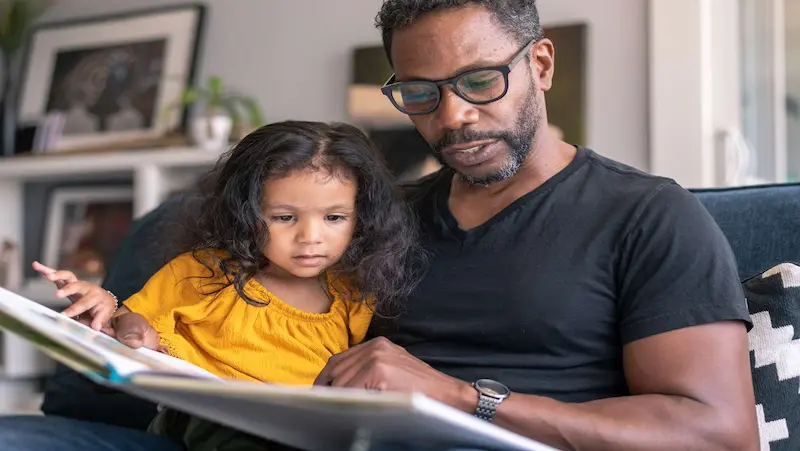
Establishing Clear Boundaries and Expectations:
Clear boundaries and expectations provide children with a sense of security, structure, and understanding of what is acceptable behavior. Here are some key aspects of establishing clear boundaries:
a. Consistency: Consistency in enforcing rules and expectations is crucial. Children need to understand that boundaries are non-negotiable and apply consistently across different situations and caregivers.
b. Mutual Agreement: Involve children in setting boundaries and expectations. This allows them to have a sense of ownership and understand the reasoning behind the rules.
c. Clarity and Simplicity: Clearly communicate the boundaries and expectations using age-appropriate language. Keep the rules simple and easy to understand, reinforcing them with reminders when necessary.
d. Natural Consequences: Encourage children to learn from the natural consequences of their actions. Allow them to experience the outcomes of their choices, which helps them develop problem-solving skills and take responsibility for their behavior.
Encouraging Effective Communication and Active Listening:
Positive discipline emphasizes open and respectful communication between parents, teachers, and children. Effective communication promotes understanding, trust, and cooperation. Here are some key principles to encourage effective communication:
a. Active Listening: Give your full attention when children express their thoughts, feelings, or concerns. Validate their emotions and show empathy. Listening actively demonstrates respect and fosters a sense of connection.
b. Open Dialogue: Encourage children to express themselves freely without fear of judgment or punishment. Create an environment where they feel comfortable sharing their thoughts and concerns. Engage in meaningful conversations that help them develop problem-solving skills.
c. Nonviolent Communication: Teach children how to express their needs and emotions in a nonviolent and respectful manner. Encourage them to use “I” statements to express their feelings and advocate for their needs without blaming or criticizing others.
d. Conflict Resolution: Teach children effective conflict resolution skills, such as negotiation, compromise, and active problem-solving. Help them understand that conflicts are opportunities for growth and learning.
Strategies for Implementing Positive Discipline at Home
Discipline is an essential aspect of raising children, but it doesn’t have to be synonymous with punishment or strict rules. Positive discipline focuses on teaching and guiding children through positive reinforcement and nurturing techniques.
By creating a positive and nurturing environment at home, parents can effectively implement positive discipline strategies. In this blog, we will explore two key strategies for implementing positive discipline at home: creating a positive and nurturing environment for discipline and using positive reinforcement and rewards effectively.

Creating a Positive and Nurturing Environment for Discipline:
Establish Clear Expectations: Clearly communicate your expectations to your children regarding their behavior, chores, and responsibilities. Ensure that they understand the reasons behind these expectations and how their actions can impact others. By setting clear guidelines, children are more likely to understand and follow them willingly.
Set a Positive Example: Children learn by observing their parents’ behavior. Model the behavior you expect from them, such as being respectful, patient, and empathetic. Show them how to handle conflicts calmly and effectively. When you exhibit positive behavior, children are more likely to emulate it.
Foster Open Communication: Encourage open and honest communication with your children. Create an atmosphere where they feel comfortable expressing their feelings, thoughts, and concerns. Listen actively and validate their emotions, even if you disagree with their perspective. By fostering open communication, you build trust and strengthen your relationship with your children.
Practice Active Listening: When your child speaks, give them your full attention. Maintain eye contact, nod, and respond with empathy. By actively listening, you show that their thoughts and feelings are valued, which encourages them to express themselves openly. This, in turn, helps in resolving conflicts and addressing disciplinary issues effectively.
Using Positive Reinforcement and Rewards Effectively:
Focus on Encouragement: Positive reinforcement involves acknowledging and praising your child’s good behavior, effort, and achievements. Instead of solely focusing on what they do wrong, emphasize what they do right. Encouragement helps build self-esteem and motivates children to continue displaying positive behavior.
Be Specific with Praise: When praising your child, be specific about what they did well. Instead of general statements like “good job,” highlight the specific behavior or action you are acknowledging. For example, say, “I appreciate how you shared your toys with your sister; it shows kindness and generosity.”
Use Rewards Thoughtfully: Rewards can be effective tools for reinforcing positive behavior. However, it is important to use them thoughtfully and in moderation. Instead of relying solely on material rewards, consider non-tangible rewards like extra playtime, a special outing, or quality time with the family. Ensure that the rewards align with the values you want to instill in your child.
Encourage Intrinsic Motivation: While external rewards can be helpful, it is crucial to foster intrinsic motivation in children. Help them understand the intrinsic benefits of good behavior, such as feeling proud, being respected, and building strong relationships. Teach them that positive behavior is its own reward and that it contributes to their personal growth and happiness.
Overcoming Challenges in Positive Discipline
Positive discipline is a powerful approach to parenting and teaching that focuses on promoting self-discipline, respect, and cooperation. While it is an effective method for fostering healthy child development, it is not without its challenges.
Two common hurdles in implementing positive discipline are dealing with resistance and opposition from children and handling power struggles. In this blog, we will explore strategies to overcome these challenges and master the art of negotiating win-win solutions, ensuring a harmonious and respectful environment for both children and adults.

Dealing with Resistance and Opposition from Children
Children, by their nature, seek autonomy and independence. This natural inclination often leads to resistance and opposition when they feel controlled or restricted. Here are some strategies to handle resistance effectively:
Provide Choices: Offering children choices allows them to feel a sense of control. Instead of imposing decisions, present alternatives that are acceptable to you. For example, if a child refuses to eat vegetables, offer two different options and let them choose. This empowers them and encourages cooperation.
Active Listening: When children express their opposition, actively listen to their concerns and empathize with their feelings. Understanding their perspective helps build trust and connection. Reflecting back their emotions and thoughts validates their experiences and opens the door for problem-solving.
Clear Communication: Clearly communicate your expectations, rules, and consequences in a calm and respectful manner. Avoid using harsh language or imposing authority. Encourage dialogue and ask for their input to foster a sense of shared responsibility.
Use Logical Consequences: Instead of punitive measures, implement logical consequences that are related to the child’s actions. For example, if a child refuses to complete their homework, the logical consequence could be losing a privilege related to their free time. This approach teaches responsibility and allows them to experience the natural consequences of their choices.
Handling Power Struggles and Negotiating Win-Win Solutions
Power struggles can arise when children feel their autonomy is threatened or when adults assert dominance. Here are some strategies to navigate power struggles and foster win-win solutions:
Identify Triggers: Recognize the situations or topics that tend to lead to power struggles. By being aware of these triggers, you can proactively address them and find alternative approaches to prevent conflicts.
Foster Collaboration: Instead of adopting a win-lose mentality, focus on finding solutions that meet both parties needs. Involve the child in problem-solving discussions, encourage brainstorming, and ensure their opinions are heard and respected. This collaborative approach promotes a sense of fairness and shared ownership.
Seek Compromise: Teach children the art of compromise and negotiation. Help them understand that not all desires can be met fully, but by finding a middle ground, both parties can feel satisfied. Encourage them to suggest alternative solutions and be open to considering their proposals.
Reinforce Positive Behavior: Recognize and reinforce positive behavior through praise, rewards, and acknowledgment. When children experience the benefits of cooperation and positive discipline, they are more likely to embrace it willingly, reducing the likelihood of power struggles. Learn about lego robotics for kids also.
Tips for Sustaining Positive Discipline Practices
Parenting is a rewarding yet challenging journey that requires dedication, patience, and a strong sense of responsibility. When it comes to disciplining children, it is essential to establish positive and effective practices that promote growth, self-discipline, and a healthy parent-child relationship.
In this blog post, we will explore three crucial tips for sustaining positive discipline practices: practicing self-care and emotional regulation as a parent and continuously learning and adapting to evolving parenting challenges.
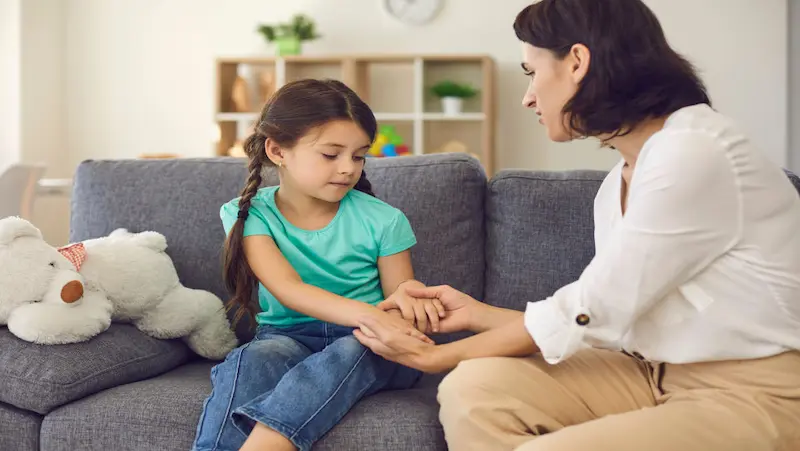
Practicing Self-Care and Emotional Regulation:
As a parent, it is easy to get overwhelmed and neglect your own well-being while focusing solely on your child’s needs. However, taking care of yourself is vital for maintaining a positive and balanced mindset, which directly impacts your ability to discipline effectively. Here are a few tips for practicing self-care and emotional regulation:
a) Prioritize self-care routines: Make sure to carve out time for activities that rejuvenate and relax you. It can be as simple as taking a walk, reading a book, pursuing a hobby, or spending quality time with your partner or friends. Engaging in self-care activities helps reduce stress, boost your mood, and increase your patience and resilience as a parent.
b) Seek support: Don’t hesitate to reach out to your support system, whether it’s your partner, family, friends, or other parents. Sharing your concerns, seeking advice, or even venting can provide emotional relief and help you gain fresh perspectives on challenging situations. Remember, it takes a village to raise a child, and seeking support is a sign of strength, not weakness.
c) Practice mindfulness and emotional regulation techniques: Developing mindfulness practices, such as meditation, deep breathing exercises, or journaling, can help you stay present and regulate your emotions effectively. When you are calm and centered, you are better equipped to handle discipline situations with patience, empathy, and clarity.
Continuously Learning and Adapting:
Parenting is an ongoing learning process, and it’s important to recognize that each child and each stage of their development presents unique challenges. To sustain positive discipline practices, it is crucial to continuously educate yourself and adapt your parenting strategies accordingly. Here are a few tips for continuous learning and adaptation:
a) Stay informed: Read books, attend workshops or webinars, and stay up to date with reliable sources of information on child development, psychology, and positive discipline techniques. Learning about different parenting styles and approaches can help you understand your child’s needs better and tailor your discipline methods to their individual personality and temperament.
b) Reflect and assess: Regularly take time to reflect on your parenting practices and their effectiveness. Assess what is working well and what could be improved. Keep an open mind and be willing to adjust your approach as you learn more about your child and their unique needs.
c) Engage in parenting communities: Joining parenting groups or online communities can be an excellent way to exchange experiences, gain insights, and learn from other parents who may have faced similar challenges. Connecting with like-minded individuals can provide valuable support and encouragement throughout your parenting journey.
Building a Strong Parent-Child Relationship:
Positive discipline practices are rooted in a strong parent-child relationship based on trust, respect, and open communication. Nurturing this relationship sets the foundation for effective discipline. Here are a few key tips to foster a strong parent-child connection:
a) Spend quality time together: Set aside dedicated time for one-on-one activities with your child. Engage in activities they enjoy and create opportunities for open conversations. This quality time allows you to understand their feelings, perspectives, and concerns, which in turn strengthens your bond and makes discipline more effective.
b) Communicate and listen actively: Encourage open and honest communication with your child. Give them a safe space to express their thoughts and feelings, and actively listen to what they have to say. Effective communication fosters trust, understanding, and mutual respect that positively impacts discipline interactions.
c) Lead by example: Children learn by observing their parents’ behavior. Model the values, behaviors, and emotional regulation techniques you want your child to adopt. Show them what it means to be kind, patient, and respectful through your own actions, and they will be more likely to emulate those qualities.
Additional Resources and Further Reading
Positive discipline is an effective approach to parenting that focuses on teaching children self-discipline, responsibility, and respect, while also fostering healthy relationships and communication.
If you’re interested in exploring this parenting philosophy further, there are several additional resources available to enhance your understanding and application of positive discipline. In this blog post, we will highlight recommended books and publications on positive discipline, as well as online communities and forums that provide valuable parenting support.
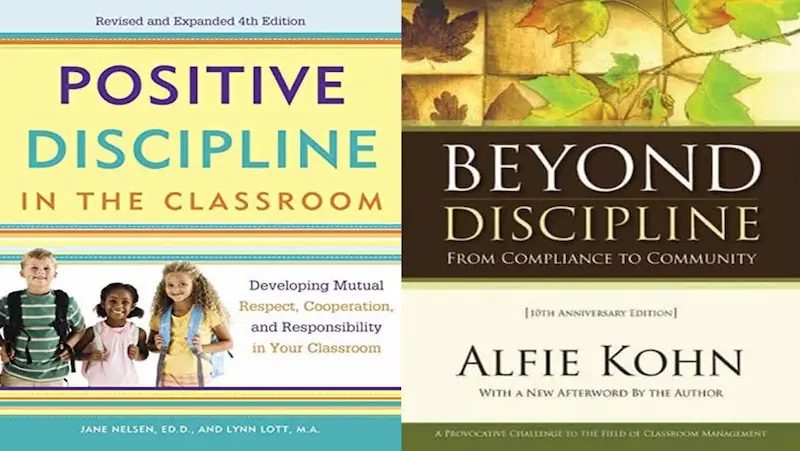
Recommended Books and Publications on Positive Discipline:
“Positive Discipline” by Jane Nelsen: This classic book offers practical techniques and strategies for raising respectful, responsible, and resilient children. It provides valuable insights into understanding children’s behavior and offers effective discipline tools that promote mutual respect and cooperation.
“Parenting with Love and Logic” by Charles Fay and Foster Cline: While not solely focused on positive discipline, this book combines love and logic to help parents raise self-confident, motivated, and responsible children. It offers practical tips on setting limits, offering choices, and encouraging problem-solving skills.
“The Whole-Brain Child” by Daniel J. Siegel and Tina Payne Bryson: This book explores the science behind children’s brain development and provides strategies for nurturing emotional intelligence, fostering resilience, and resolving conflicts positively. It offers practical guidance on helping children integrate their emotions and thinking for healthier behavior.
“No-Drama Discipline” by Daniel J. Siegel and Tina Payne Bryson: Building on their previous work, the authors provide insights into effective discipline techniques that emphasize connection, understanding, and empathy. It offers tools for handling tantrums, meltdowns, and power struggles while maintaining a strong parent-child bond.
“How to Talk So Kids Will Listen & Listen So Kids Will Talk” by Adele Faber and Elaine Mazlish: This book focuses on improving communication between parents and children. It offers practical strategies for resolving conflicts, encouraging cooperation, and fostering mutual understanding, all of which are central to positive discipline.
Online Communities and Forums for Parenting Support:
Positive Discipline Association: The Positive Discipline Association’s website provides a wealth of resources, including articles, videos, and workshops on positive discipline. It also features a community forum where parents can connect, seek advice, and share their experiences.
The Gottman Institute: While primarily known for its work on relationships, The Gottman Institute offers valuable resources for parenting. Their website provides articles, videos, and workshops on positive parenting strategies, including effective discipline techniques that promote emotional intelligence and empathy.
Aha! Parenting: Aha! Parenting is a comprehensive online resource offering articles, blog posts, and practical advice on positive discipline, nurturing parent-child relationships, and fostering emotional well-being in children. The site also includes a community forum for parents to share their challenges and seek support.
Parenting for Brain: Parenting for Brain offers evidence-based articles and resources on various aspects of parenting, including positive discipline. It covers topics such as brain development, emotional intelligence, and practical tips for fostering positive behavior in children.
Reddit Parenting Communities: Reddit hosts various parenting communities where you can find support, share experiences, and seek advice from other parents. Subreddits like r/Parenting, r/PositiveParenting, and r/AskParents provide platforms for discussions on positive discipline and other parenting topics.
Conclusion
In conclusion, mastering positive discipline is a transformative approach that has the power to create lasting change in our lives and the lives of those around us. By embracing the principles of positive discipline, we can foster healthy relationships, build strong foundations of trust and respect, and nurture the growth and development of individuals.
Throughout this blog, we have explored the key elements of positive discipline and its potential to revolutionize the way we approach discipline. We have learned that positive discipline is not about punishment or control, but rather about teaching, guiding, and empowering others to make responsible choices and learn from their mistakes.
One of the fundamental aspects of positive discipline is the importance of connection and communication. By establishing strong connections with our children, students, or any individual we interact with, we can create an environment where they feel safe, supported, and understood. This foundation of trust enables us to effectively communicate expectations, set boundaries, and address misbehavior in a constructive and respectful manner.
So, let us embark on this transformative journey of positive discipline, armed with knowledge, empathy, and a commitment to fostering lasting change in ourselves and those we influence. Together, we can create a world where discipline becomes an opportunity for growth, connection, and lifelong learning. Learn about robotics for kids also.
Also, BrightChamps provides a comprehensive platform for learning about money for kids, offering interactive and engaging resources that teach financial literacy, budgeting, saving, and other essential money management skills.
Frequently Asked Questions
A1. Positive discipline is an approach that focuses on teaching children appropriate behavior rather than relying on punishment. It differs from traditional disciplinary approaches by promoting mutual respect, communication, and problem-solving skills.
A2. Mastering positive discipline can lead to lasting change in children’s behavior by teaching them valuable skills, such as self-regulation, empathy, and cooperation. It helps them develop a sense of responsibility and internalize positive values.
A3. Key principles and strategies of positive discipline include setting clear expectations, using logical consequences, offering choices, active listening, problem-solving together, and modeling positive behavior.
A4. Positive discipline fosters a healthy parent-child relationship by creating an environment of trust, respect, and open communication. It encourages cooperation and strengthens the emotional connection between parents and children.
A5. Yes, positive discipline is effective for children of different ages and temperaments. It can be tailored to suit the developmental stage and individual needs of each child, promoting their social and emotional growth.
A6. Common challenges parents may face when practicing positive discipline include consistency, managing strong emotions, and finding alternative discipline strategies. They can overcome these challenges by seeking support, learning new techniques, and practicing self-care.
A7. Yes, positive discipline can be applied in different settings, such as schools or daycare centers. It helps create a positive and respectful learning environment, enhances cooperation among peers, and promotes self-discipline.
A8. Positive discipline contributes to the development of important life skills in children by teaching them problem-solving, decision-making, empathy, self-control, and conflict resolution. These skills are crucial for their future success and well-being.
A9. While positive discipline is generally effective, some potential drawbacks or limitations may include the need for consistency and patience, finding appropriate consequences, and adapting strategies to individual children. It may also require additional support for children with special needs.
A10. To ensure consistency and follow-through when implementing positive discipline techniques, parents can establish clear rules and expectations, communicate openly with their children, use reminders and visual aids, provide positive reinforcement, and seek support from partners or professionals when needed.

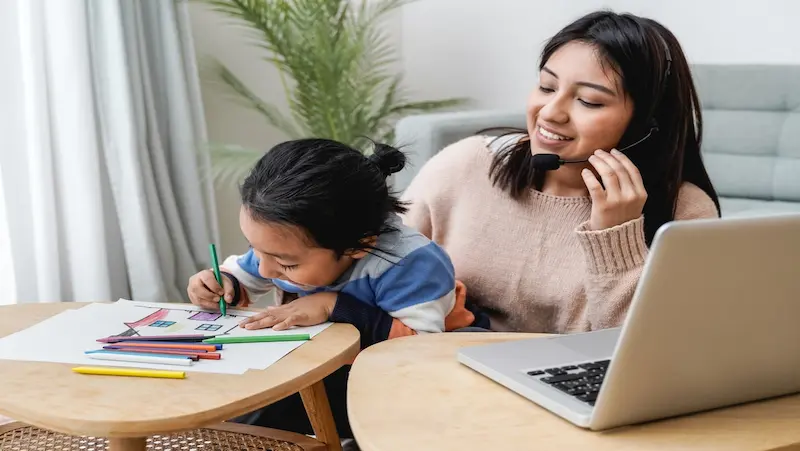
 We are an army of educators and passionate learners from BrightChamps family, committed to providing free learning resources to kids, parents & students.
We are an army of educators and passionate learners from BrightChamps family, committed to providing free learning resources to kids, parents & students.













